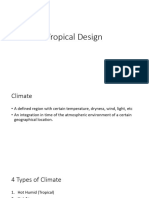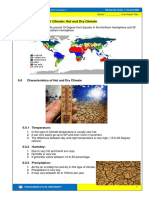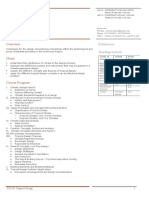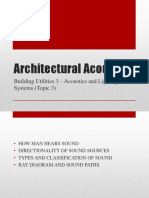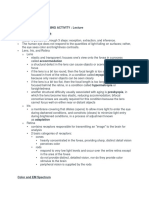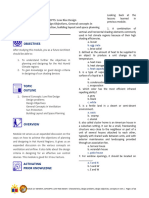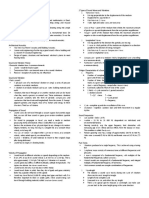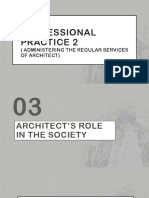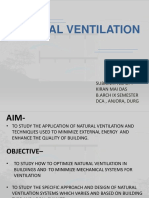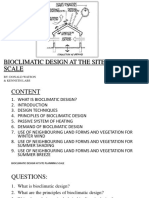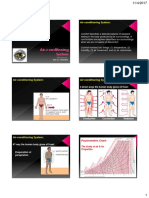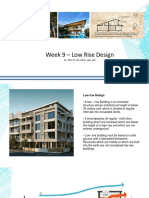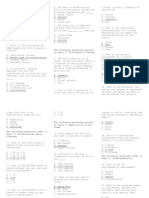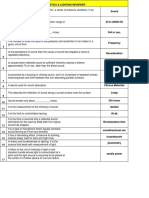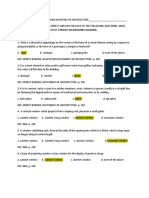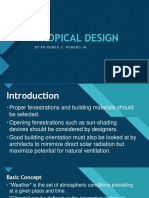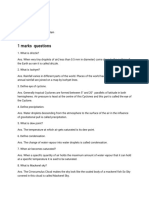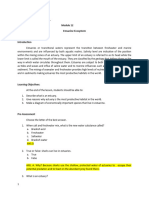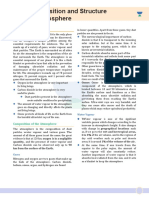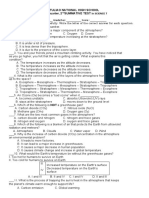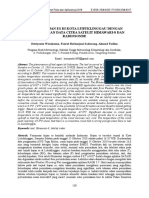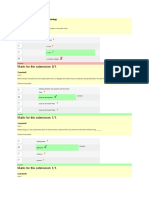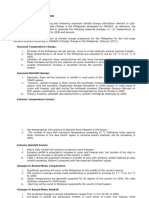0% found this document useful (0 votes)
104 views120 pagesTropical Lecture
The document discusses key elements of climate and tropical architecture. It defines climate and differentiates it from weather. The main climate types discussed are tropical (type A), dry (type B), temperate (type C), continental (type D), and polar (type E) as classified by the Koppen system. Each climate type has distinguishing characteristics and influences architectural design approaches. The climates of various regions in the Philippines are also examined, focusing on temperature, humidity, and rainfall patterns.
Uploaded by
Christian Dayne TolentinoCopyright
© © All Rights Reserved
We take content rights seriously. If you suspect this is your content, claim it here.
Available Formats
Download as PDF, TXT or read online on Scribd
0% found this document useful (0 votes)
104 views120 pagesTropical Lecture
The document discusses key elements of climate and tropical architecture. It defines climate and differentiates it from weather. The main climate types discussed are tropical (type A), dry (type B), temperate (type C), continental (type D), and polar (type E) as classified by the Koppen system. Each climate type has distinguishing characteristics and influences architectural design approaches. The climates of various regions in the Philippines are also examined, focusing on temperature, humidity, and rainfall patterns.
Uploaded by
Christian Dayne TolentinoCopyright
© © All Rights Reserved
We take content rights seriously. If you suspect this is your content, claim it here.
Available Formats
Download as PDF, TXT or read online on Scribd
/ 120
